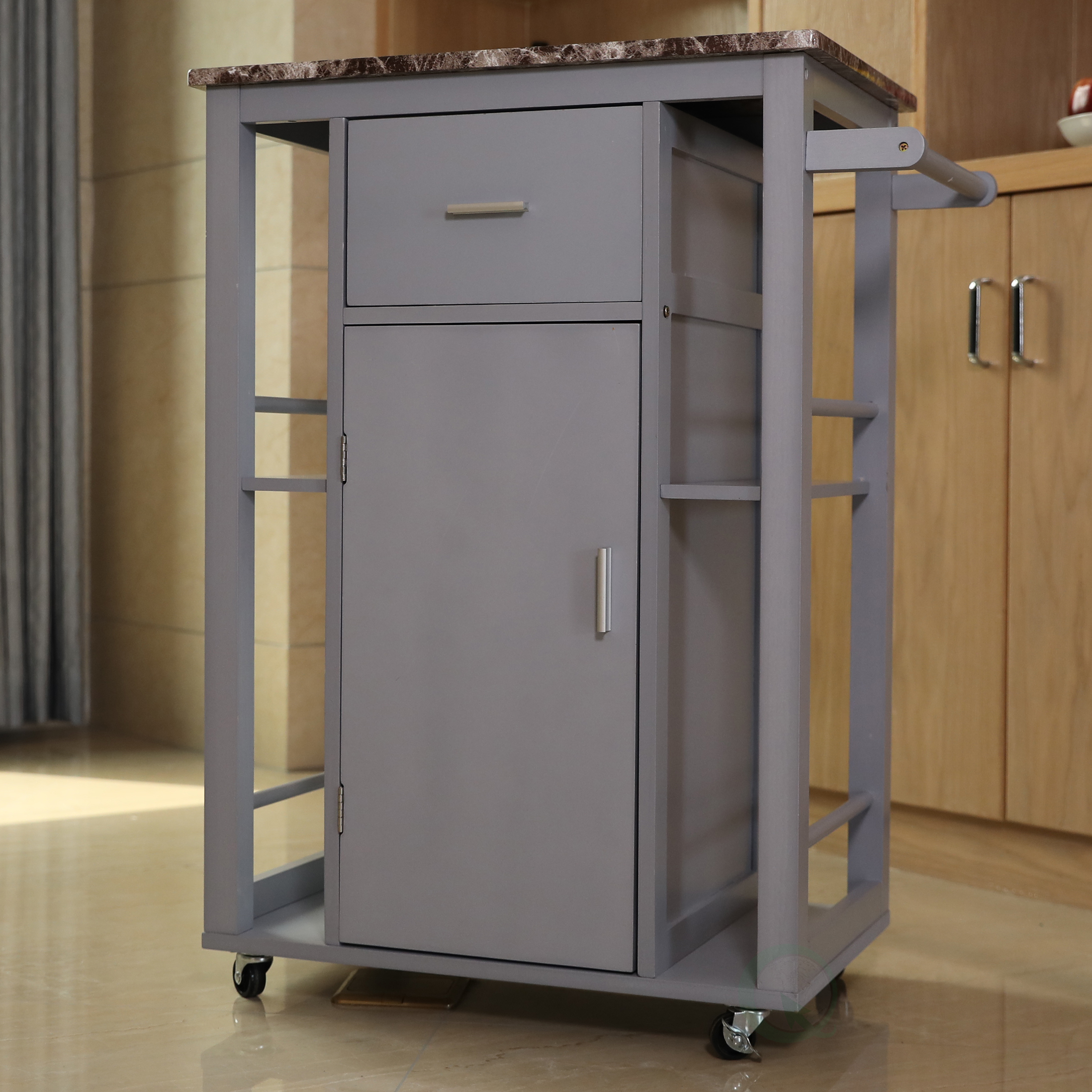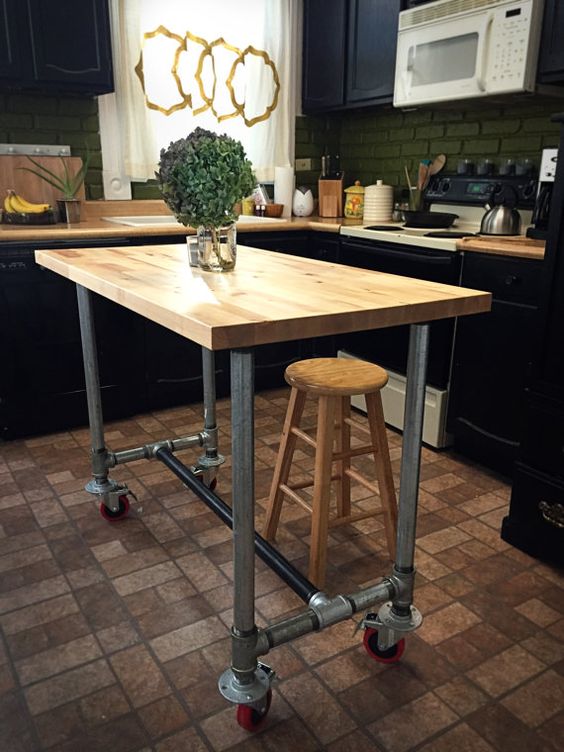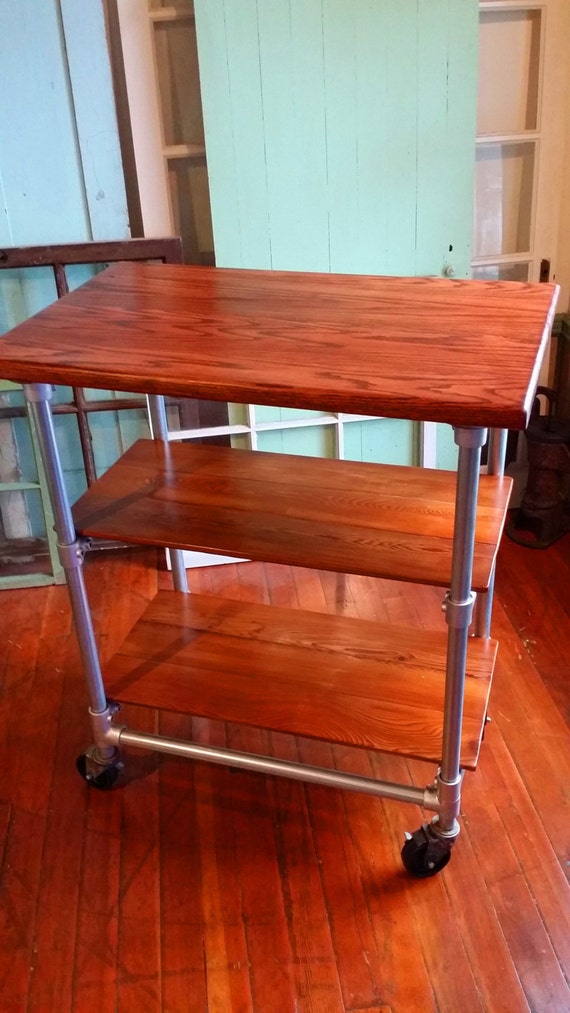Enhancing Mobility and Flexibility
In today’s modern kitchens, functionality and flexibility are key considerations. Kitchen islands have become a staple feature, offering additional workspace, storage, and even seating options. However, traditional stationary islands can sometimes limit mobility and flexibility in the kitchen. This is where retractable casters come into play, offering a convenient solution to enhance the versatility of kitchen islands. Let’s talk about retractable casters for kitchen islands, exploring the benefits, installation process, maintenance, and common mistakes to avoid.

Benefits of Retractable Casters
Retractable casters offer several benefits that make them a popular choice for kitchen islands. First, they provide increased mobility, allowing you to easily move the island to different locations within the kitchen or even to other rooms if needed. This can be particularly useful in smaller kitchens where space is limited, as it allows for greater flexibility in layout and configuration.
Second, retractable casters can make cleaning and maintenance tasks much easier. By simply retracting the casters, you can access hard-to-reach areas underneath the island, making it easier to clean the floor and surrounding areas. This can help to maintain a clean and hygienic kitchen environment with minimal effort.
Third, retractable casters can also enhance safety in the kitchen. By securely locking the casters in place when the island is in use, you can prevent any unwanted movement or instability, reducing the risk of accidents or injuries. This is especially important in busy kitchen environments where there may be children or pets present.
Last, retractable casters can add a touch of versatility and style to your kitchen island. With a wide range of designs and finishes available, you can choose casters that complement the aesthetic of your kitchen and enhance its overall look and feel.

Installation Process
Installing retractable casters on your kitchen island is a relatively straightforward process that can be completed with basic tools and equipment. Firstly, you’ll need to measure the dimensions of your island to ensure that the casters you choose are the correct size. Once you’ve selected the appropriate casters, you can begin the installation process.
Start by flipping the island upside down to access the underside. Use a drill to create pilot holes for the caster screws, making sure to position them evenly around the base of the island. Then, attach the casters securely to the base using the screws provided, making sure to tighten them fully to prevent any wobbling or instability.
Next, test the retractable mechanism to ensure that it operates smoothly and securely. Most retractable casters feature a simple locking mechanism that can be engaged or disengaged with a foot pedal or lever. Make sure that the casters lock firmly in place when engaged, and that they retract fully when disengaged.
Finally, flip the island back over and test its mobility by moving it around the kitchen. If everything is installed correctly, the island should move smoothly and securely on the casters, with no wobbling or instability.

Maintenance Tips
To keep your retractable casters in good condition and ensure their longevity, it’s important to perform regular maintenance tasks. Firstly, check the locking mechanism regularly to ensure that it is functioning properly and securely. If you notice any issues or signs of wear and tear, such as difficulty locking or unlocking the casters, it may be necessary to lubricate or replace the mechanism.
Secondly, keep the casters clean and free from dirt and debris that can affect their performance. Regularly sweep or vacuum the area underneath the island to remove any dust, crumbs, or other debris that may accumulate over time. You can also use a damp cloth to wipe down the casters and keep them looking clean and shiny.
Thirdly, inspect the casters for any signs of damage or wear, such as bent or broken wheels, loose screws, or damaged locking mechanisms. If you notice any issues, it’s important to address them promptly to prevent further damage and ensure the safety and functionality of your kitchen island.
Lastly, avoid placing excessive weight or pressure on the casters, as this can cause them to wear out more quickly and affect their performance. Be mindful of the weight limit specified by the manufacturer, and avoid overloading the island with heavy objects or appliances.

Common Mistakes to Avoid
Choosing the Wrong Size Casters: One common mistake is selecting casters that are either too large or too small for your kitchen island. This can affect the stability and mobility of the island, so be sure to measure carefully and choose casters that are the correct size for your specific needs.
Neglecting Maintenance: Another mistake is neglecting to perform regular maintenance tasks on your retractable casters. This can lead to issues such as difficulty locking or unlocking the casters, reduced mobility, and even damage to the mechanism. Make sure to clean and inspect the casters regularly to keep them in good condition.
Ignoring Weight Limits: It’s important to pay attention to the weight limits specified by the manufacturer when selecting and using retractable casters for your kitchen island. Exceeding the weight limit can put excessive strain on the casters, leading to premature wear and potential safety hazards.
Poor Installation: Improper installation of retractable casters can lead to instability, wobbling, and even damage to the island or flooring. Make sure to follow the manufacturer’s instructions carefully and securely attach the casters to the base of the island to ensure stability and safety.

Can I install retractable casters on any type of kitchen island?
Yes, retractable casters can typically be installed on most types of kitchen islands, including those with solid wood, laminate, or granite countertops. However, it’s important to check the weight limit and compatibility of the casters with your specific island before installation.
Are retractable casters easy to install?
Yes, retractable casters are relatively easy to install with basic tools and equipment. However, it’s important to follow the manufacturer’s instructions carefully and ensure that the casters are securely attached to the base of the island to prevent any issues with stability or mobility.
Can I use retractable casters on carpeted floors?
While retractable casters are designed for use on hard surfaces such as tile, hardwood, or laminate flooring, they may also be suitable for use on low-pile carpeting. However, it’s important to check the compatibility and weight limit of the casters with your specific flooring type before installation.
Do retractable casters come with a warranty?
Many retractable caster manufacturers offer a warranty against defects in materials and workmanship. Be sure to check the warranty terms and conditions before purchasing to ensure that you’re covered in case of any issues or defects with the casters.
Can I replace the casters on my kitchen island if they become damaged or worn out?
Yes, most retractable casters are designed to be easily replaceable if they become damaged or worn out over time. Simply remove the old casters and replace them with new ones according to the manufacturer’s instructions.

Retractable Kitchen Island, Controlled with an iPhone – IKEA Hackers

Kitchen Island on Casters – Heirlooms and Hardware

Mobile base for a kitchen island

Wooden Kitchen Island on Casters

Retractable Workbench Caster

Kitchen Islands On Casters – Ideas on Foter

Unique Rolling Kitchen Island Ideas Portable kitchen island, Small portable kitchen island

Items similar to Kitchen Island, reclaimed wood, casters, cart, shelves, pipe, industrial on Etsy

Related Posts:
- Lyn Design Kitchen Island
- Big Kitchen Island Ideas
- Kraftmaid Kitchen Island With Seating
- Kitchen Island With Overhang For Seating
- Tuscan Kitchen Island Lighting Fixtures
- Country Kitchen Island Bench
- Kitchen Island Track Lighting Ideas
- Best Pendant Lights Over Kitchen Island
- Monarch Kitchen Island Set
- Black Gloss Kitchen Island